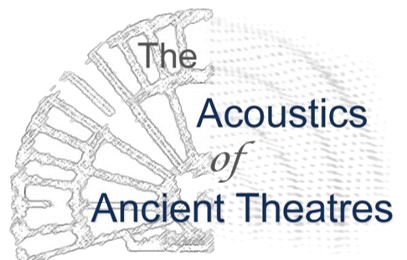
The Acoustics of Ancient Theatres
International Symposium
Verona - Italy, 6 to 8 July 2022
Theatres in Italy from Roman age to Renaissance: the meaning of reverberation time measurements
Alessandro Cocchi
DOI: https://doi.org/10.58874/SAAT.2022.32
Abstract:In the mind of C.W. Sabine, reverberation time was thought as a numerical index of what was happening in a closed hall when a sound source acting within was suddenly stopped: the original idea was that sound rays where travelling in any direction reinforcing residual sound energy, but at the same time overlapping audible messages that these rays where carrying to the listener’s brain. x
As well known, he stated a formula linking the R.T. value to the hall volume and to the capacity of the impinged surfaces of keep a fraction of the sound energy: from one hundred years to now, many authors researched in the field and stated the best R.T. values for the listener of different kinds of sound.
Surely Greeks and Romans did not know the possible existence of such a parameter, as they acted in open spaces, neither Vitruvius and, successively Alberti, Milizia, Poletti and so on, even if the tile cover utilized by the Romans to preserve from sun light and rain was avoiding that some sound energy dispersed in the sky.
Surely the modern computer assisted measurements techniques are able to keep some kind of sound decay even in an ancient theatre, but we are aware, as Greeks were, that they are derived only from reflections travelling quite horizontally, between vertical structures, or inclined between actors and spectators via orchestra floor, when not occupied from public.
Keywords:acoustical parameters, reverberation time, running strength
Pages:75-77
Paper:![]()